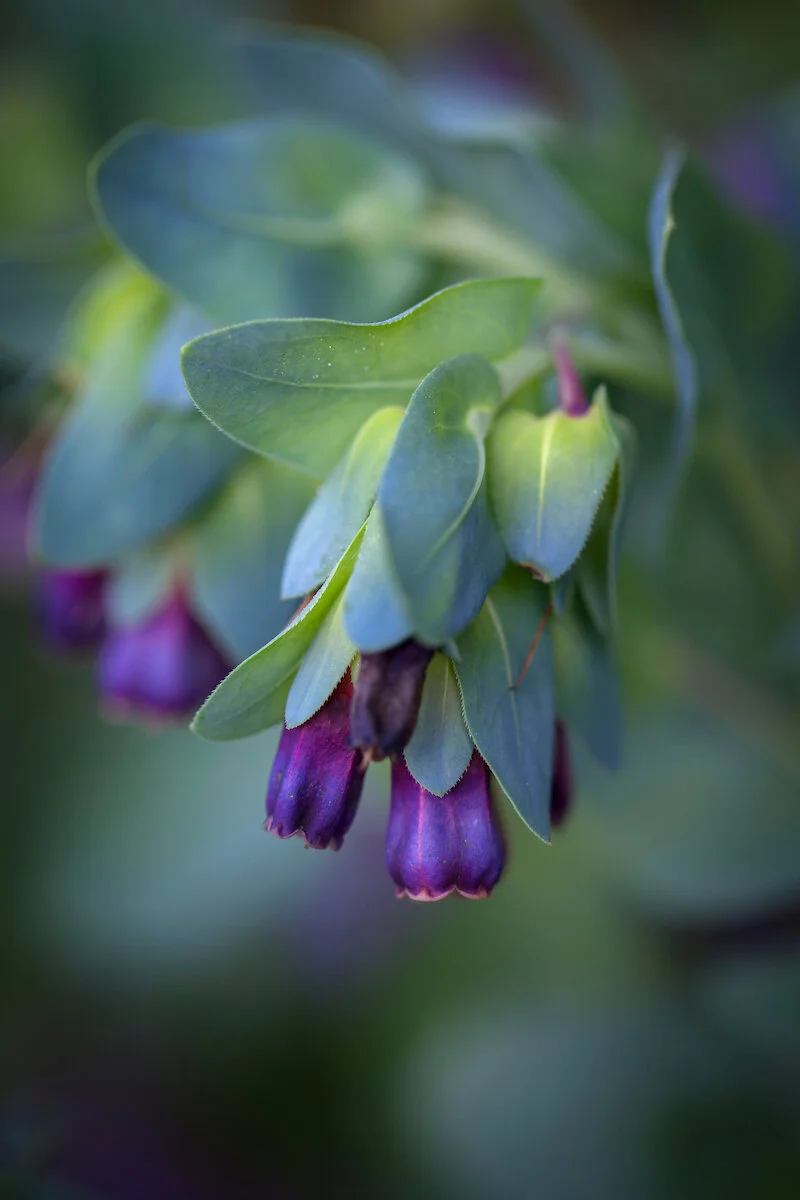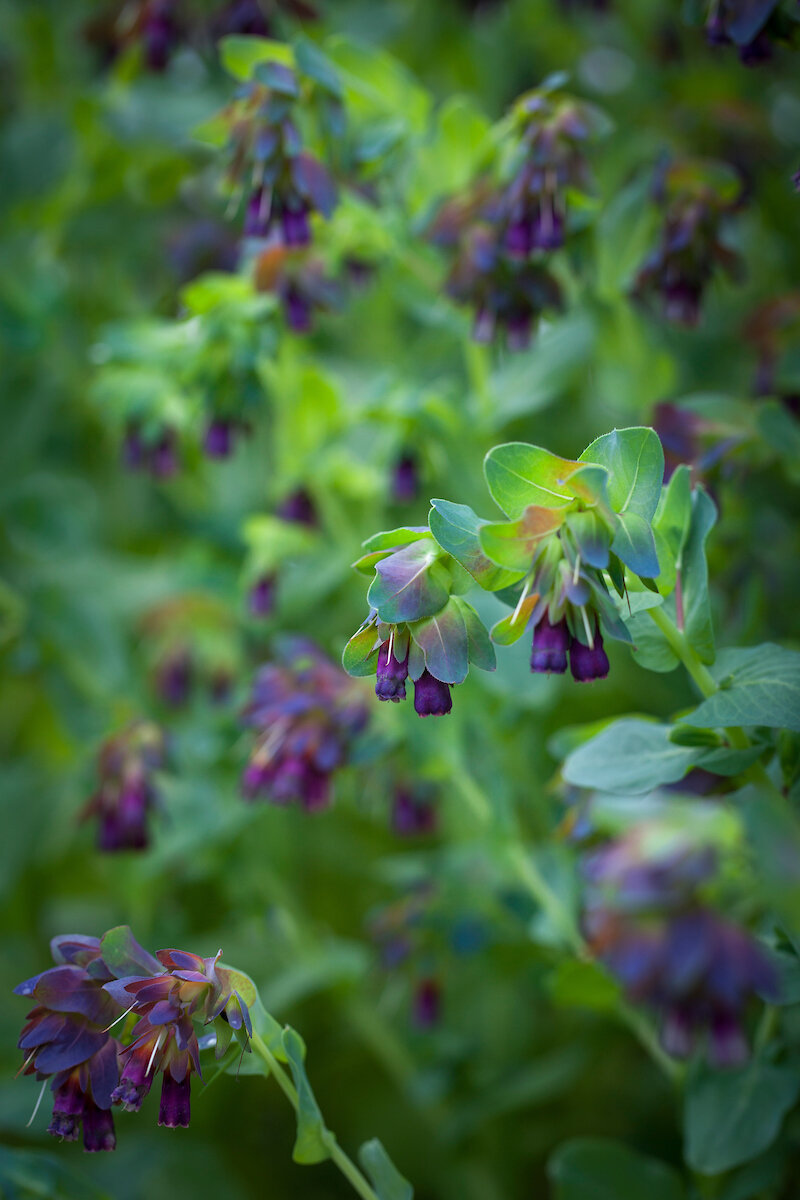Cerinthe
Photographs by Sabina Rüber
Cerinthe is a prima donna of a plant – beautiful, unusual and opulent. Its origins are in southern Europe, and although often classified as a hardy annual, in its natural form it can be perennial. In our gardens it will revel in a warm, sunny spot where it will seed around and in particularly mild areas, its glaucus evergreen foliage will survive from one year to the next as long as the temperature doesn’t drop below about -5C.
The most commonly grown form in cultivation is Cerinthe major var. purpurascens. Known in the States as the blue shrimp plant, it has wonderful, arching swathes of damson-purple flowers offset by handsome blue-green leaves. With these rich colour effects, it looks wonderful with silvery-leaved plants such as stachys or perovskia. Less widely available are the yellow form of the plant such as ‘Yellow Gem’ or ‘Yellow Candy’, which have yolk-yellow flowers that are equally sweet and attractive to bees.
Like many hardy annuals, cerinthe can be sown either in late summer or in spring. Sowing individual seeds in modules is easy as each seed is large and easy to handle, but before you sow, soak them overnight in warm water as the seeds have a tough outer coating. Germinate the seeds in a warm place at a temperature of 18-20C and then move to a cooler place to grow on. The seedlings can be planted out when all danger of frost has passed. Choose an open, sunny spot in well-drained soil.
Back to The Flower Garden main page. To buy a copy of The Flower Garden book click here.


